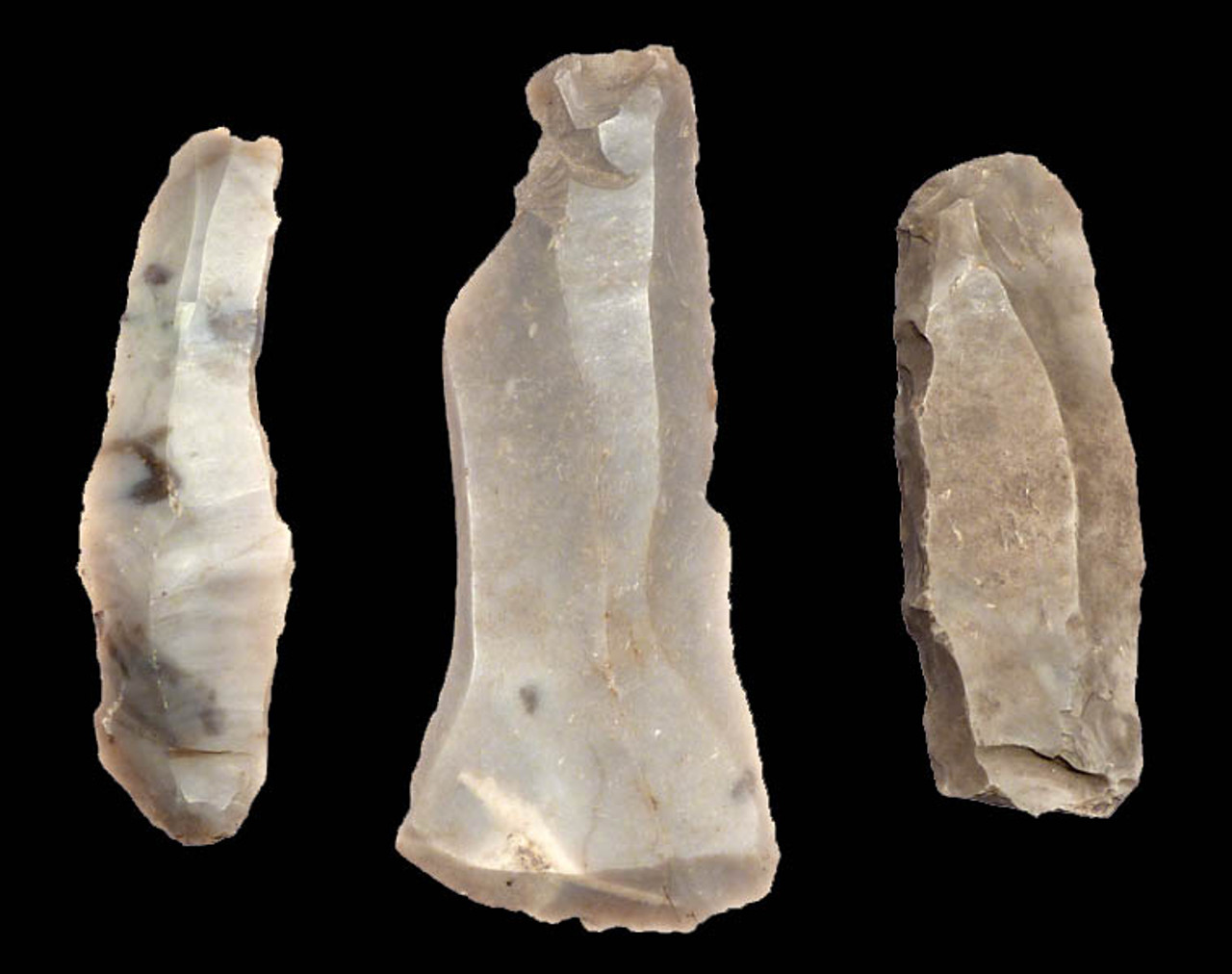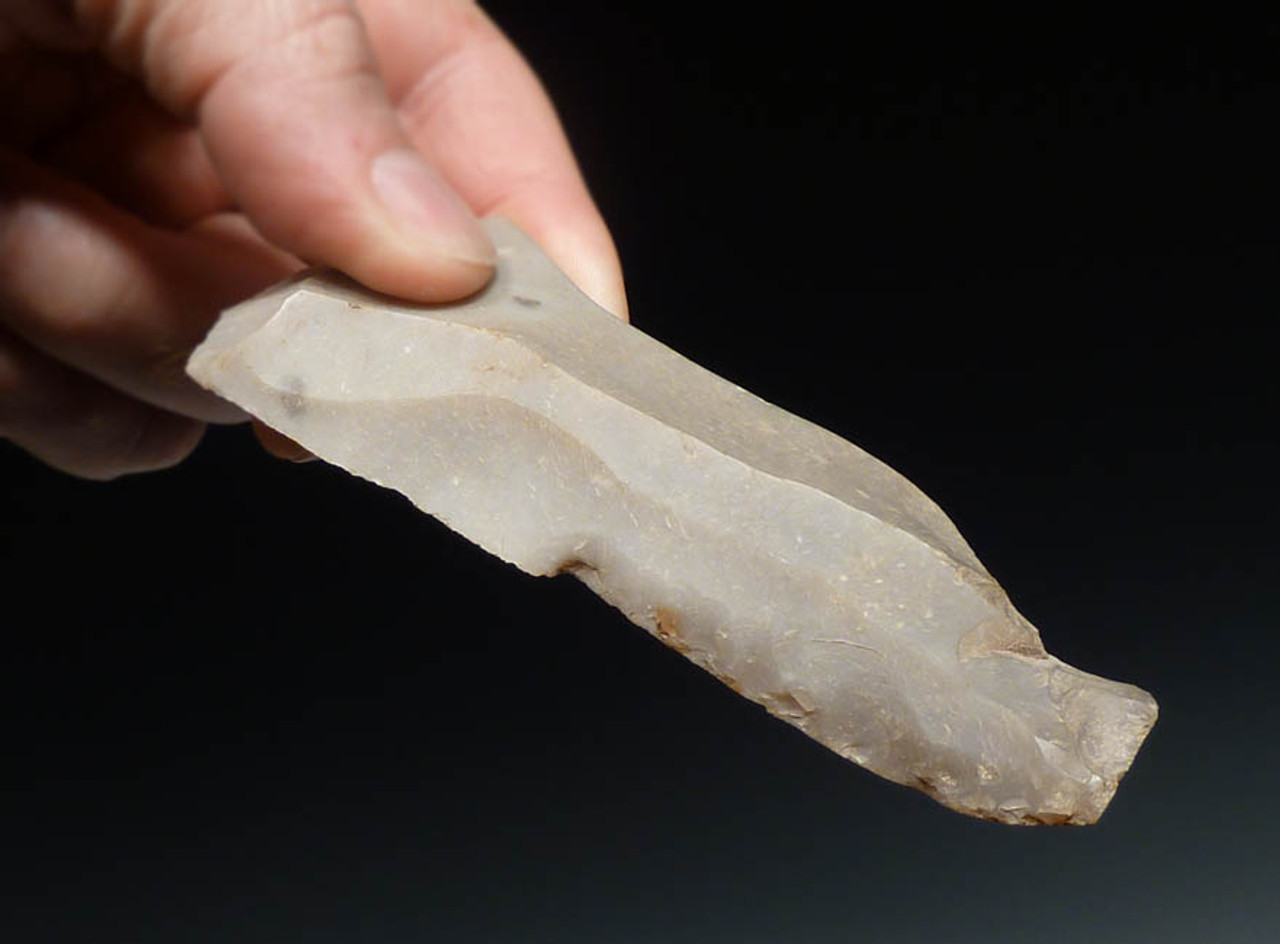Product Description
ITEM #
|
N115
|
||
ID
|
European Neolithic Tool
|
||
FOUND
|
Sebjerg, Isle of Funen, Denmark
|
||
AGE
|
NEOLITHIC (FUNNEL-NECKED
|
||
SIZE
|
4.1" - 3" long
|
||
CONDITION
|
INTACT AND COMPLETE -
|
||
NOTE
|
COMPLETE NEOLITHIC BLADES IN RARE, |
||
INCLUDES DISPLAY BOX - Actual Item - One Only
Comes with a certificate of authenticity / information sheet |
|||
CLICK HERE TO LEARN MORE ABOUT EUROPEAN NEOLITHIC TOOLS
This genuine European Neolithic flint blade set was collected from an Early Neolithic Period settlement site once inhabited by people of the Funnel-Necked Beaker Pottery Culture of Northern Europe. It was fashioned and utilized between 6000 and 5400 years ago.
This is a set of THREE Neolithic European flint UNIFACIAL CORE-STRUCK BLADES. All are in a rare state because in most cases, these are found broken and incomplete either from ancient times or later in the environment. These are as they were originally made and are INTACT. This is a highly recommended set for the educator or to be used as a exhibit reference display. Each blade shows various stages and types that were employed in the Neolithic Age. The largest, central piece shows a cutting edge used and re-used with masterful retouching to re-sharpen by its former Neolithic user. The darker gray blade to the right of it in the box is a BACKED BLADE that has one side purposely flaked flat to rest a finger on in order to apply pressure when used in cutting. The blade to the left is a very thin razor-like blade in comparison to the other two more robust types. This thin blade shows moderate re-touching and use, not as much as the large center specimen. With each blade in this set is represented the various stages of use and prismatic unifacial blade typology.
The flint has been patinated by thousands of years of exposure to a water environment. Original ground minerals and sediment still intact in hinge fractures - an indicator ONLY seen in AUTHENTIC specimens. This fine set represents supreme examples of workmanship of a skilled tool maker from the earliest of north Europe's farming society. NO REPAIR AND NO RESTORATION. Genuine tools from the Funnel-Necked Beaker Pottery Culture are seldom available for public sale and represent an excellent opportunity to acquire a genuine stone tool artifact from some of the world's first farming peoples!
The earliest food-producing communities of Northern Europe belonged to the Funnel-Necked Beaker Pottery Culture. This culture existed from 6200 to 4800 years ago in the Northern-most European region. The pottery produced by these earliest farmers had a distinctive necked design. The first use of the PLOW, ANIMAL TRACTION and WHEELED TRANSPORT in north-central Europe is attributed to this Neolithic culture. Megalithic chambered tombs were employed and built into long mounds. These mounds made by the Funnel-Necked Beaker peoples still stand today in many parts of north Europe.
Farming in northern and central Europe differed from that of the more temperate southern regions of Europe, the Middle East and north Africa. The harsh winters required crops to be sown in the Spring as opposed to the Fall for the latter. Woodland grazing in the north meant more emphasis on the raising of cattle and pigs compared to the herds of sheep and goats popular in the south.
Neolithic settlements were typically small in population with only about forty to sixty people. The wooden longhouse was the main type of building which housed both people and their livestock. Postholes are all that remain today leaving burials and ritual stone structures as the only remnants of this period. Neolithic burials were either individual or communal. The communal burials were housed in large megalithic structures which were then covered with earth creating a giant mound. Offerings of stone tools, pottery and ornaments were often included in burials.
The Neolithic people of the Funnel-Necked Beaker Pottery Culture represented the first farming and stock-herding society in Northern Europe.
 US DOLLAR
US DOLLAR
 EURO
EURO
 AUSTRALIAN DOLLAR
AUSTRALIAN DOLLAR
 CANADIAN DOLLAR
CANADIAN DOLLAR
 POUND STERLING
POUND STERLING














